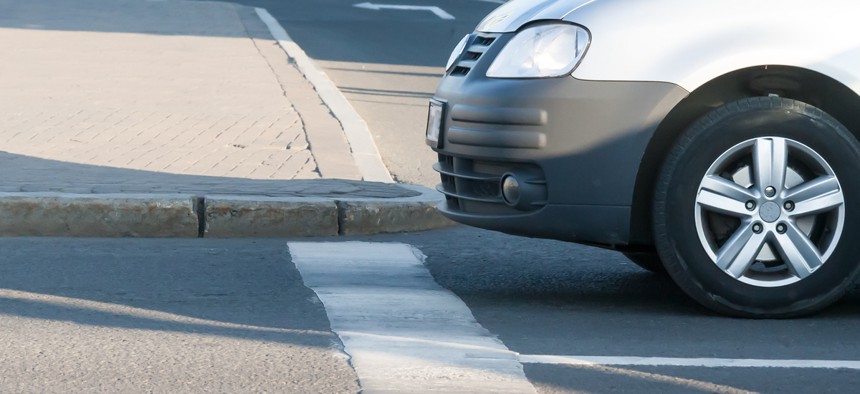Report: Stop Lines do Little to Encourage Drivers to Stop

The study examined traffic and crash data from suburbs, including video footage from intersections before and after stop lines were placed. Shutterstock
Stop lines, the thick white bars painted ahead of intersections, do little to prevent crashes or influence driver behavior, a 14-year study found.
Stop lines—the thick white bars painted ahead of intersections to indicate where cars should stop—are largely ineffective at preventing crashes and also don’t do a great job of getting drivers to hit the brakes, according to the results of a 14-year study in Minnesota.
The study, conducted by the Minnesota Local Road Research Board, examined crash and traffic data from a handful of suburbs from 2004 to 2018, including video clips from 16 intersections both before and after the installation of a stop line. The results showed that stop lines “showed no association with crash occurrence,” and were useful in decreasing accidents only occasionally, in conjunction with other factors, “especially the presence of a painted crosswalk.”
The lines, also known as stop bars, were likewise unhelpful in keeping drivers from pulling their cars too far into intersections. According to an analysis of video footage, drivers tended to stop on or up to 10 feet past the location of the stop line, both before and after installation.
“In fact, it is reliably determined that the more space there is between the stop line and the absolute edge of the conflicting driving lane, the more drivers ignore the stop line and push forward,” researchers wrote.
Stop lines are between 1 and 2 feet wide and are traditionally used at intersections with poor visibility to keep drivers from rolling their cars beyond the curb to look around the corner, though they’re also used in conjunction with stop signs and crosswalks, and in places where it’s not obvious where a vehicle should stop.
Drivers are not required by law to pause at stop bars, and they’re not used at every intersection, though citizens often request them at “intersections with frequent stop sign violations,” according to a technical summary of the report.
Despite their ubiquity, there’s been little research on the efficacy of stop lines—“its benefits are assumed, not proven,” the researchers wrote.
Transportation officials in Minnesota were curious about the “definitive effects” of the lines, which aren’t expensive to install but can cost thousands of dollars to maintain over time, particularly in the Midwest, where harsh winters require frequent repainting. The city of Edina, Minnesota for example, estimated that “the maintenance of latex paint stop lines at an intersection costs around $1,000 per year,” according to the report.
While the study results found that stop lines alone did not reduce crashes, researchers did note that the bars were somewhat effective at getting drivers to reduce their speed while approaching an intersection—even if they still didn’t stop entirely.
“Although there was no significant effect observed between the presence of a stop line and the decision of drivers to come to a complete stop instead of performing a ‘rolling’ stop, the presence of the stop line reduced the roll speed for some vehicles,” the report said. “In most cases, the extreme high speeds were greatly reduced.”
Based on those findings, stop lines may not be the most effective method of influencing drivers’ behaviors, the report concludes.
The researchers said that their hope is that their findings, "Will serve as a reference for planners and engineers when considering placement of a stop line at one or many intersections."
Kate Elizabeth Queram is a staff correspondent for Route Fifty and is based in Washington, D.C.
NEXT STORY: DISA takes on DOD cloud operations





